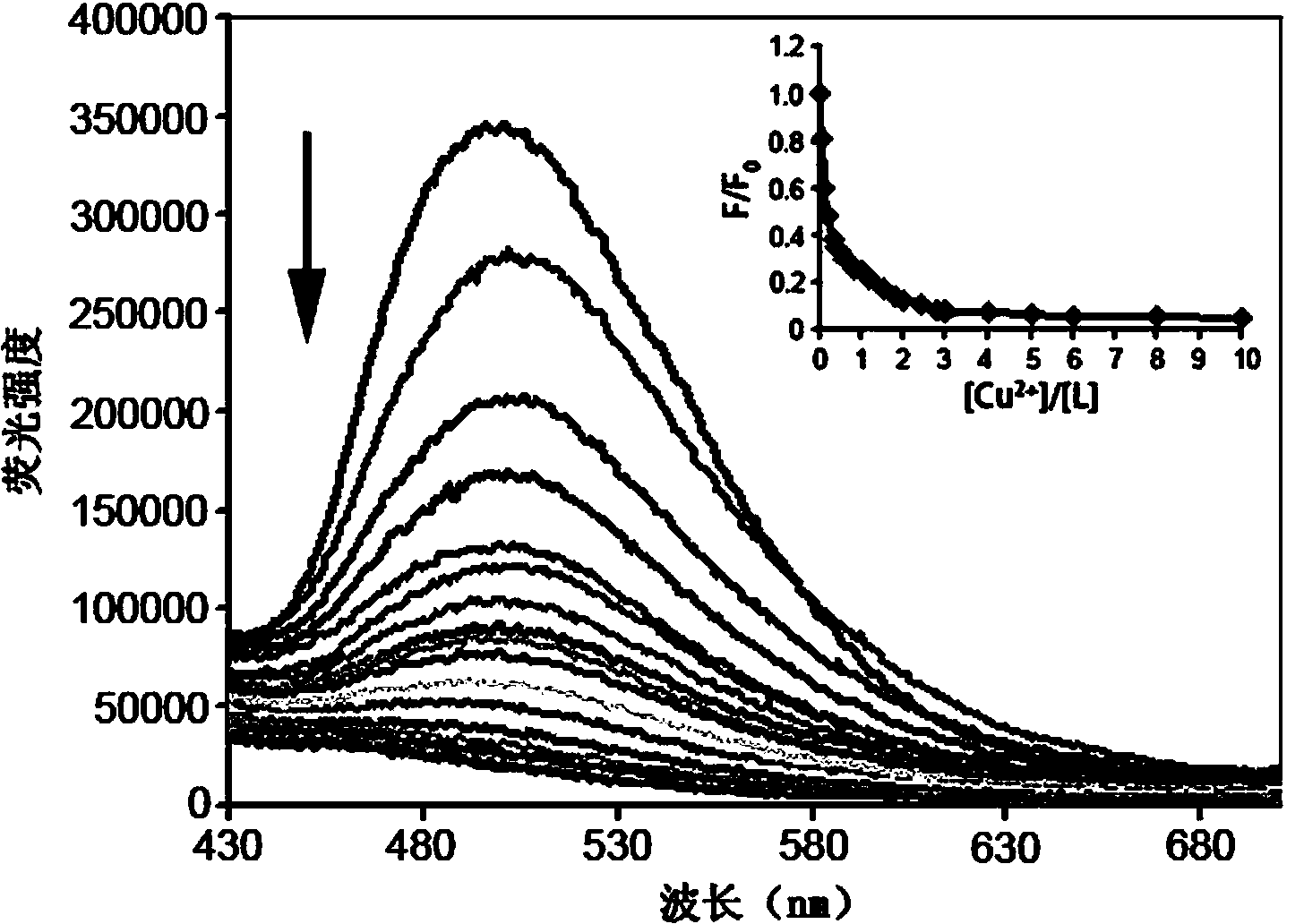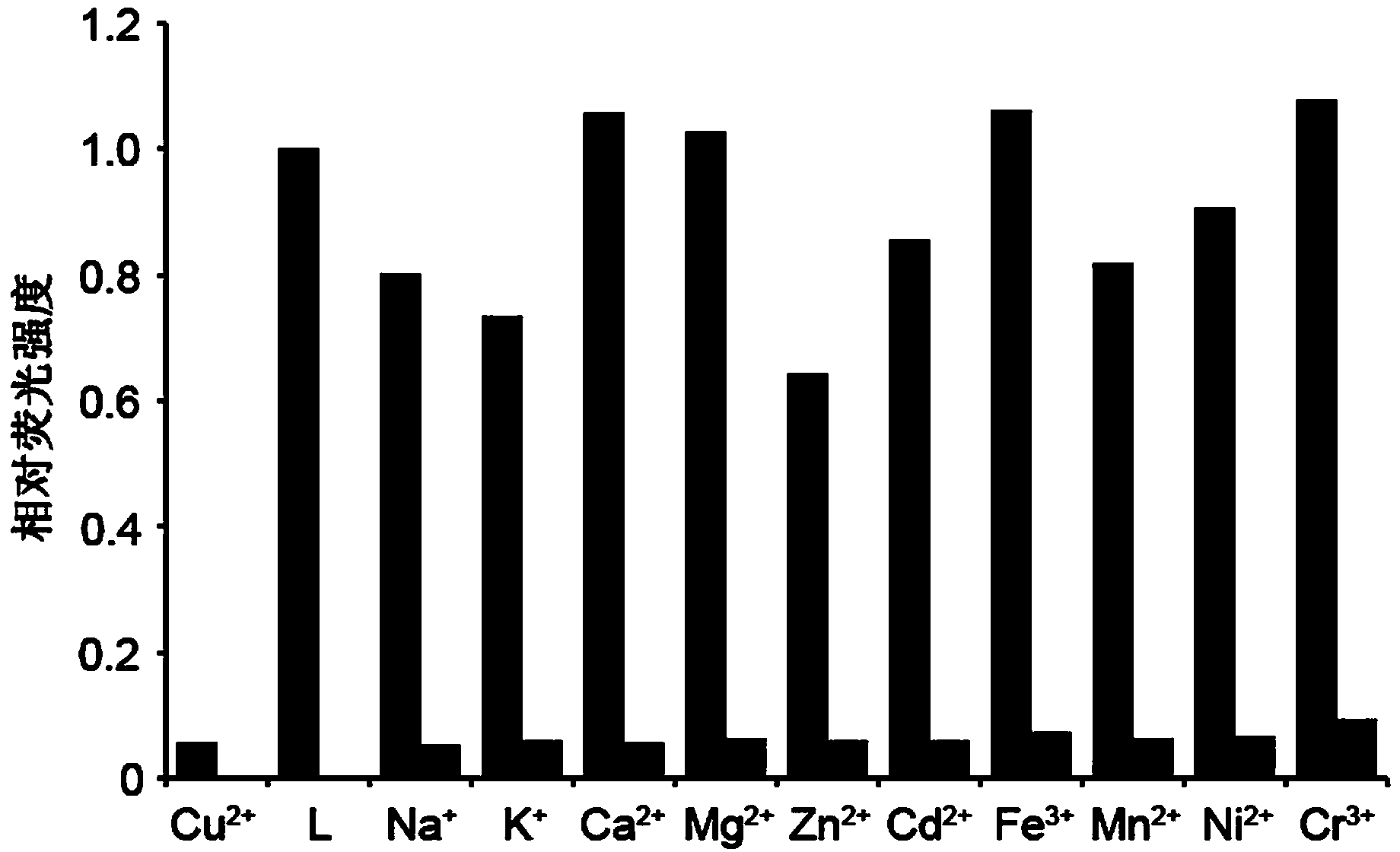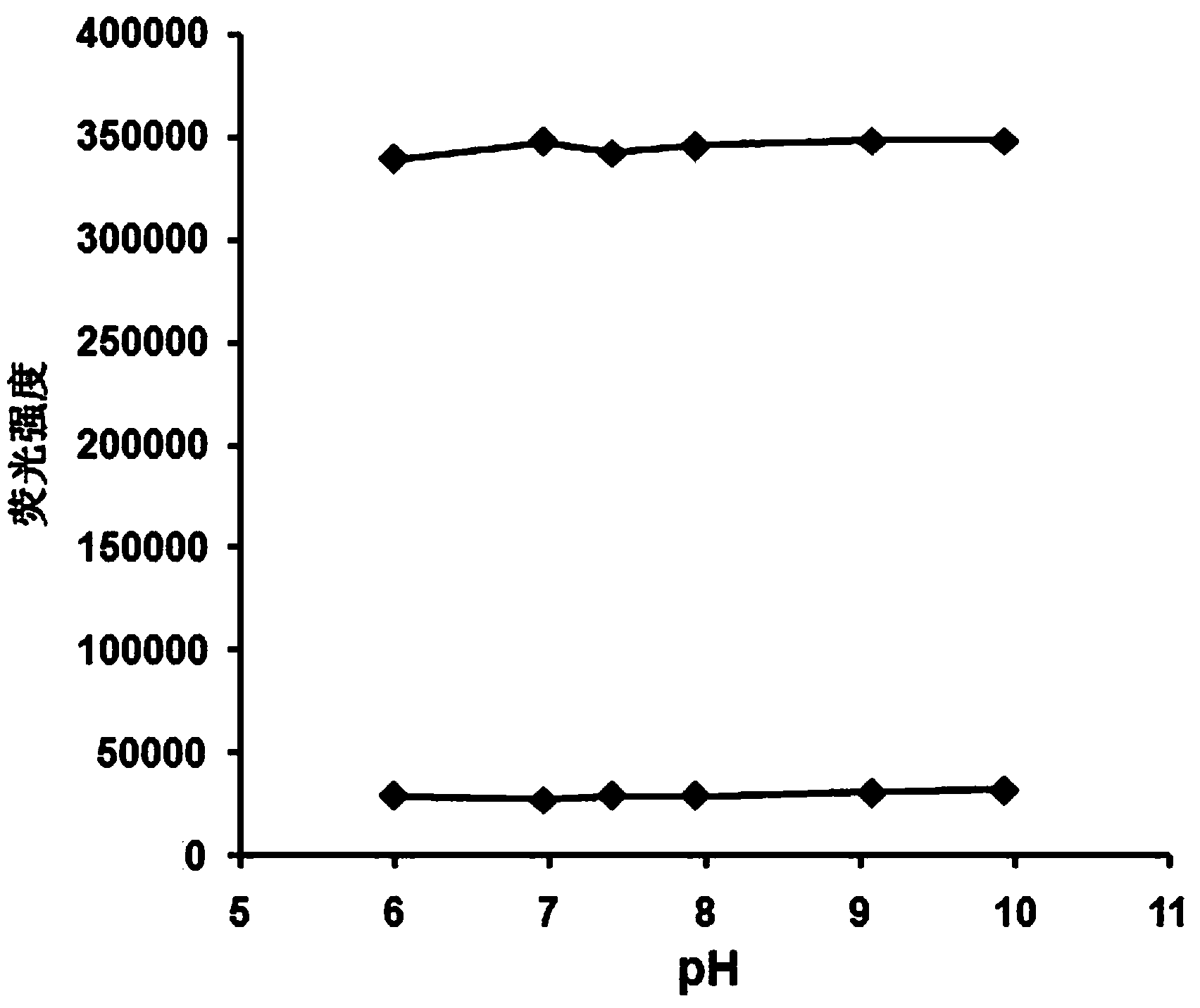A kind of c3 symmetry fluorescent molecular probe and its preparation method and application
A fluorescent molecular probe and fluorescent molecular technology, applied in the field of metal ion analysis and detection, can solve problems such as damage and human poisoning, and achieve the effects of good selectivity, low cost and good application prospects.
- Summary
- Abstract
- Description
- Claims
- Application Information
AI Technical Summary
Problems solved by technology
Method used
Image
Examples
Embodiment 1
[0024] Embodiment 1: Synthesis of fluorescent molecular probe L
[0025] Dissolve 140.6 mg of triaminoguanidine chloride (1 mmol) in a mixed solution of 4 mL of ethanol and 2 mL of water, and heat to reflux until completely dissolved. Then, 471.6 mg quinoline-2-carbaldehyde (3 mmol) was added dropwise to the above solution, and the reflux was continued for 4 h. After the reaction, the resulting scarlet solution was cooled to room temperature and stirred overnight. The solvent was removed, the residue was dissolved with an appropriate amount of absolute ethanol, and then anhydrous ether was added dropwise until all the scarlet precipitates were precipitated. Suction filtration, the precipitate was washed several times with anhydrous ether, and vacuum-dried to obtain a fluorescent molecular probe.
[0026] The characterization data is:
[0027] .
Embodiment 2
[0028] Embodiment 2: Specific application of fluorescent molecular probe L of the present invention to copper ions
[0029] The synthesized fluorescent molecular probe L was prepared as a mother solution with a 5% DMSO aqueous solution, and then diluted to a corresponding concentration with a buffer solution (50 mM HEPES, pH=7.40) for analysis and testing.
[0030] [Fluorescence titration: at the above 1 x 10 -5 М Fluorescent Molecular Probe L buffer solution, titrated with 0 to 3 equivalents of copper ion aqueous solution, excited with 360 nm light, and detected the change of fluorescence spectrum at 504 nm. From figure 1 It can be seen that, at 0 equivalent, probe L has a maximum emission at 504 nm. With the addition of copper ions, the fluorescence of fluorescent molecular probe L is gradually quenched; when 3 equivalents of copper ions are added, the fluorescence of fluorescent molecular probe L is completely quenched, which shows that the coordination of fluorescent mo...
Embodiment 3
[0033] Embodiment 3: Specific application of fluorescent molecular probe L of the present invention to cadmium ions
[0034] The synthesized fluorescent molecular probe L was prepared into a mother liquor with redistilled chloroform, and then diluted with chloroform to a corresponding concentration for analysis and testing.
[0035] Fluorescence titration: dilute high-concentration fluorescent molecular probe L with redistilled chloroform to a solution of 5 μМ, titrate with methanol solution of 0 to 3 equivalents of cadmium ions, excite with 370 nm light, and detect at 543 nm and 599 nm changes in the fluorescence spectrum. From Figure 4 It can be seen from the figure that at 0 equivalent, the fluorescent molecular probe L has a maximum emission at 543 nm. With the addition of cadmium ions, the fluorescence gradually increased and red-shifted to 599 nm; when 3 equivalents of cadmium ions were added, the fluorescence intensity reached the maximum value, and the fluorescence ...
PUM
 Login to View More
Login to View More Abstract
Description
Claims
Application Information
 Login to View More
Login to View More - R&D
- Intellectual Property
- Life Sciences
- Materials
- Tech Scout
- Unparalleled Data Quality
- Higher Quality Content
- 60% Fewer Hallucinations
Browse by: Latest US Patents, China's latest patents, Technical Efficacy Thesaurus, Application Domain, Technology Topic, Popular Technical Reports.
© 2025 PatSnap. All rights reserved.Legal|Privacy policy|Modern Slavery Act Transparency Statement|Sitemap|About US| Contact US: help@patsnap.com



